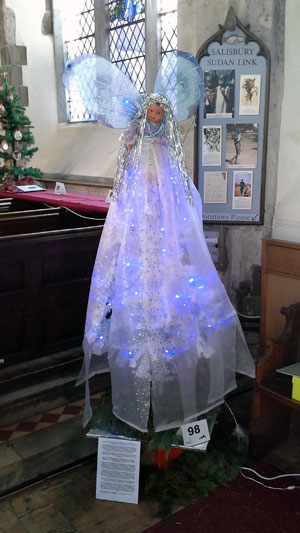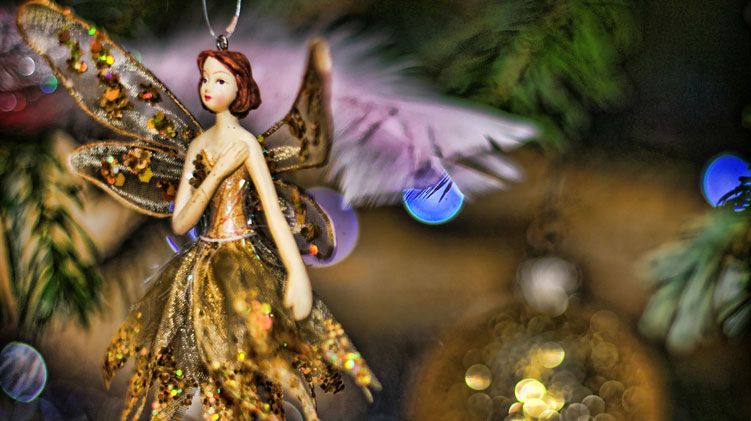Every year, St Thomas’s Church in Salisbury holds a tree festival. This year, there were around 108 entries and Salisbury NWR entered this magical fairy tree! The design is based on a traditional story from Australia about the origin of the fairy on the Christmas tree.
 This is a story has been handed down orally for many generations. It gives a different spin to the Santa Claus theme of Christmas and has an ecological and non-materialistic tone.
This is a story has been handed down orally for many generations. It gives a different spin to the Santa Claus theme of Christmas and has an ecological and non-materialistic tone.
The Story of the Tree Fairies
Long, long ago, the lands that we call Europe had many great forests. It is said that within these great forests lived the fairies or ‘the fair ones’. While it is true that the fairies had pale skin from living in the dullness of the forests, this is not how they got their name. They were called fairies because they were fair of heart, fair of mind and fair of spirit, and so the Gods and Goddesses had rewarded the fairies with the gift of magic.
The fairies, like many creatures that possessed the knowledge of magic, had a special fondness for children. Every mid-winter’s eve, the Queen of the fairies invited all the children of all clans and tribes to visit her deep in heart of the forest.
Since only the children were invited and the forest can be a scary and dangerous place for children who don’t know it well, the Queen bade the spiders to weave a web from the edge of the forest right into the centre where she sat at her throne.
Then, at sunset as the children gathered at the edge of the forest, the Queen waved her magic wand. She turned the spider’s web to silver threads that glittered under stars and moonlight and guided the children through the darkness of the forest in towards her throne. As the children made their way through the forest, the flickering torches carried by the older children could be seen by their parents as they waited outside. Children often took gifts that they made for the fairies, though it wasn’t necessary to have one.
“She turned the spider’s web to silver threads that glittered under stars and moonlight”
As they reached the Queen’s throne, the children would approach her in single file. One at a time and with a whisper in her ear they would ask for a gift that only the Queen Fairy could bring. Then with a kiss on the cheek from the Queen, each child would follow the silver threads back to the edge of the forest where their parents waited for them. The children knew they were not to speak of what they saw or tell what wish they had made. For if they did, they knew their wish would not come true.
Today the fairies, like the forests are few and most children no longer have the opportunity to visit the fairies in their forests, but many people still provide a haven in which they might dwell on Christmas Eve.
We bring our little forest or tree into our homes and decorate it with symbols of a time long past. A silver thread is wound from the bottom edge of the tree through its branches to the top centre of the tree, symbolising the silver spider’s web. Silver stars are hung and flashing electric lights replace the flickering torches. Little statues of elfin and fairies are placed on the tree with a Queen of the Fairies on top. On Christmas morning, children awake to find presents at the bottom of the tree representing the gifts from the fairies.
One last thing – don’t forget to put some food and drink out for the fairies who dwell in your own little forest!

